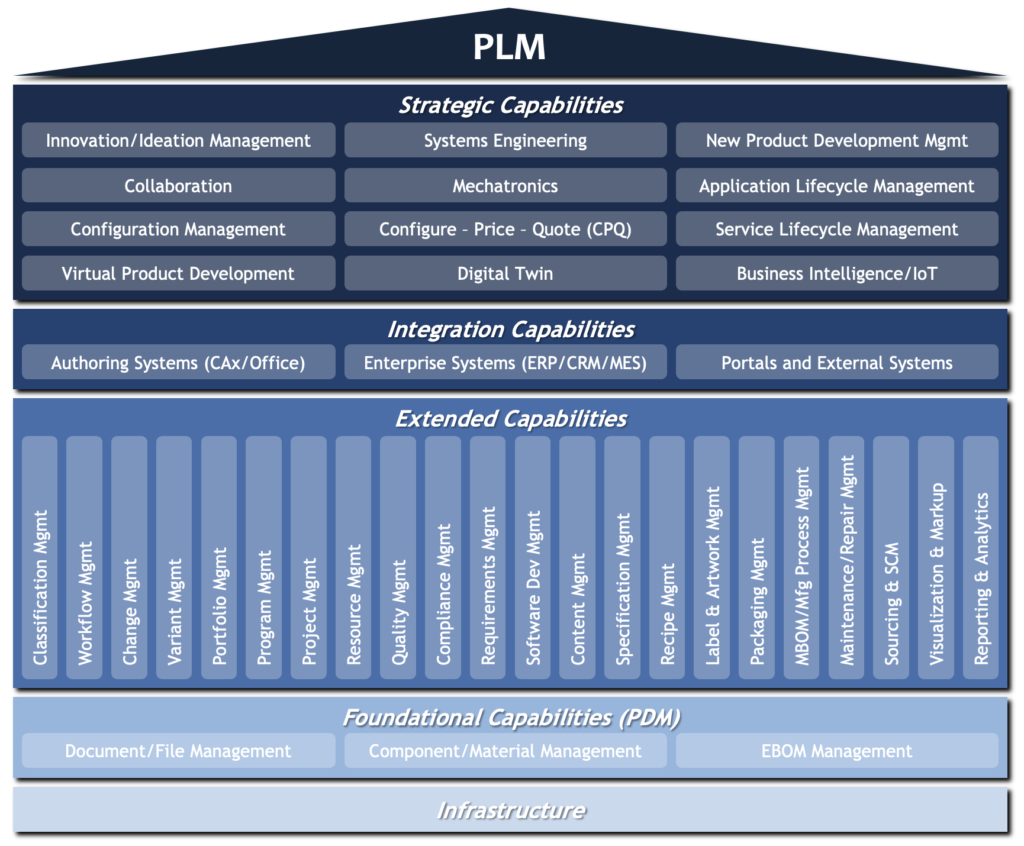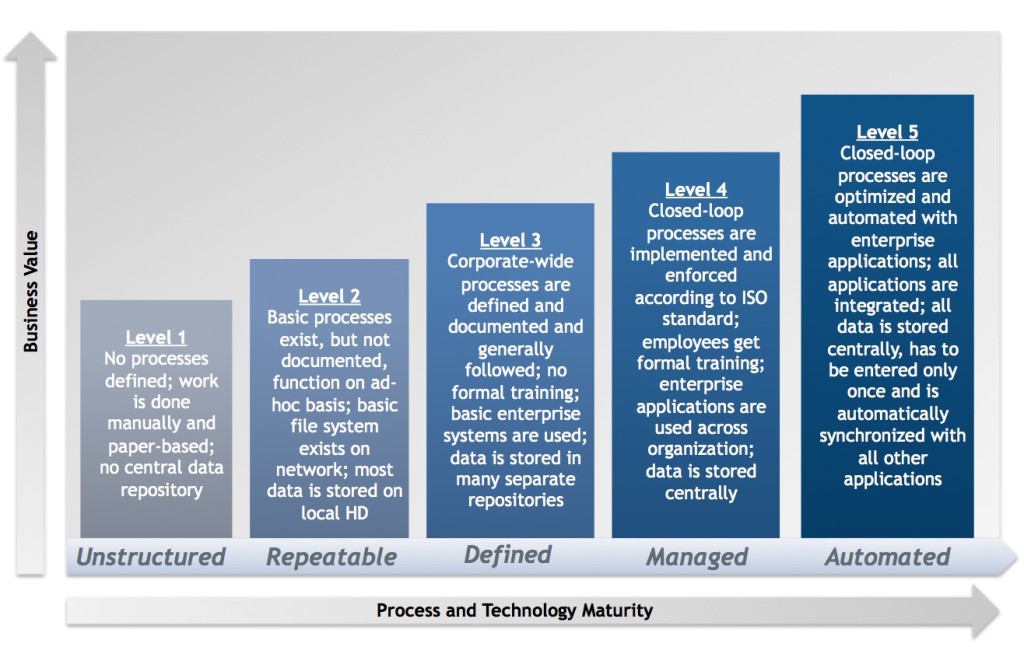Latest PLM Insights
How many of the PLM capabilities available today do companies actually use? The answer is sobering...
About 20 years ago I had just started to work as the head of new product development at a large Swiss technology corporation when we decided to evaluate and implement a 3D CAD and Product Data Management (PDM) system. Our primary motivation was to improve engineering efficiency and reduce product development costs. The scope was quite limited and included CAD data management, some document management, EBOM management, engineering workflow management and a semi-automated Manufacturing Resource Planning (MRP) interface. But that was pretty much all that was available in PDM systems at that time; the term Product Lifecycle Management (PLM) had not even been coined yet (see this article on PDM and PLM).
Looking back, we were really pushing the envelope at that time. The maturity we achieved in terms of technology adoption and process automation was very high compared with what was available and possible.
The same could not be said today. Since that time software vendors have introduced PLM and a host of new modules and functionality. The scope we implemented 20 years ago would barely scratch the surface of what is possible today.
As an example, PLMadvisors lists 40 different functional capability areas for PLM:

But how much of the available PLM capabilities do companies actually use today? The answer is sobering.
Looking at the responses from our PLM Self-Assessment and my personal experience working with dozens of large, midsize and small companies across all manufacturing industries, most companies do not use much more today than what was available 20 years ago.
The scope most companies have implemented and are using is quite limited, in most cases not much more than the foundational capabilities shown in the PLM Framework graphic above. This means their PLM maturity is relatively low. Applying a maturity scale of 1 to 5, where 1 is no PLM at all and 5 is a fully integrated PLM system across the extended organization, I have found that their average PLM maturity is slightly over 2.

What does this mean for these companies? It means a tremendous loss of potential business value and a very low return on their investment in PLM. Capital is invested in software licenses whose available functionality is only partially utilized to manage CAD data, as well as some documents and engineering BOMs, and to automate a few engineering workflows.
With only a little incremental effort and investment in optimizing business processes and configuring the system, the same software licenses could be used to manage all product related data and information, including CAD data, all product-related documents, engineering and manufacturing BOMs (EBOMs and MBOMs), requirements, projects, resources, etc. and it could automate company-wide processes, such as engineering change management, new product development, quality, sourcing and procurement, etc.
Most companies using PLM could benefit greatly from conducting an assessment or diagnosis of the state of their current PLM deployment. Such an assessment can reveal some low hanging fruit on how to expand the system with little additional effort and investment to utilize it more broadly and effectively across the entire organization and take better advantage of new capabilities.
To find out how you can get more out of your PLM system and how your practices and processes compare to best-in-class companies, contact PLMadvisors to schedule a PLM Capability and Maturity Assessment.

